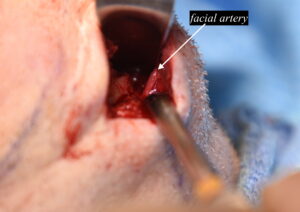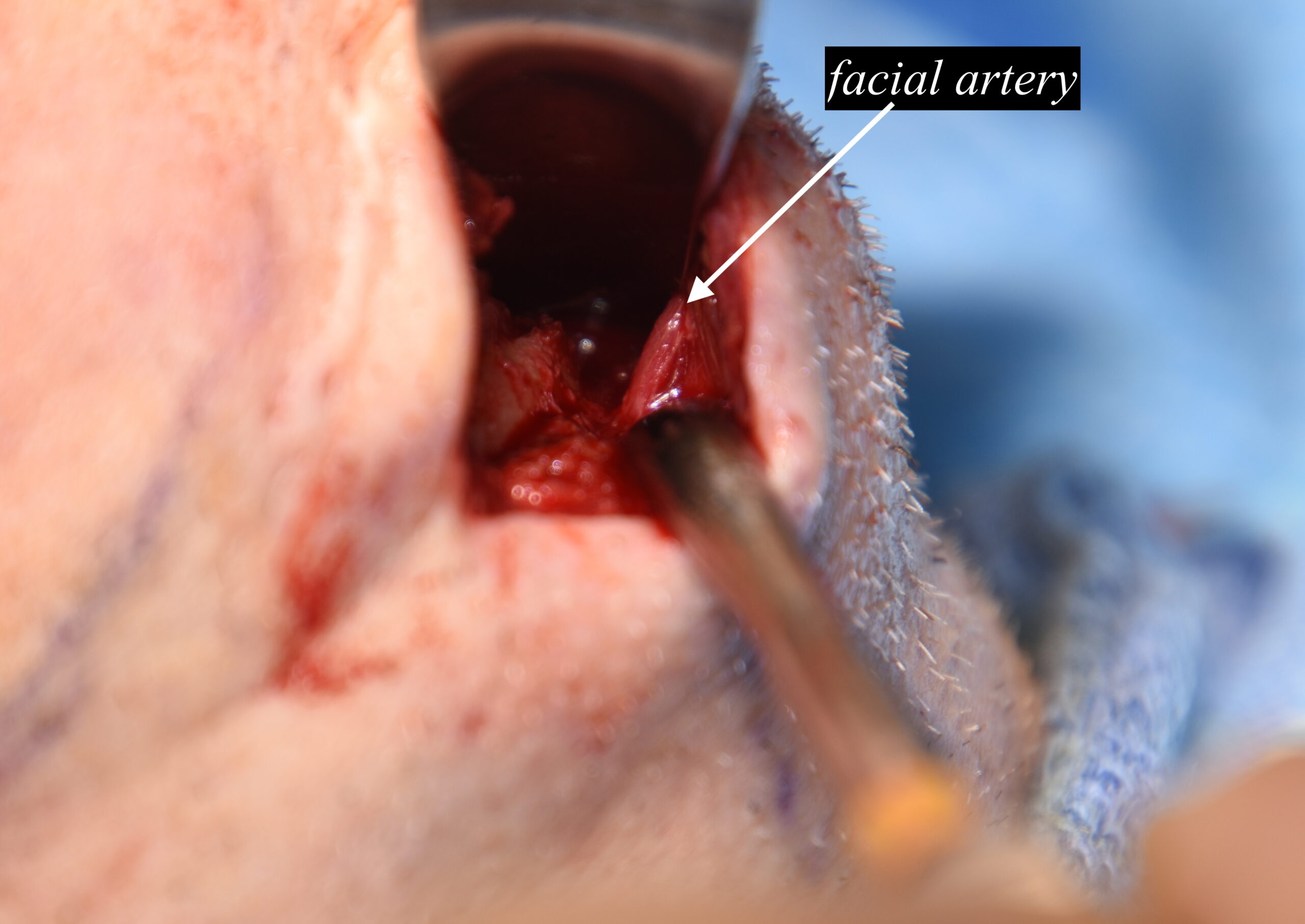The anatomy of the marginal mandibular branch of the facial nerve crosses from beneath the platysma muscle in the neck up across the side of the chin to innervate multiple lower lip and chin muscles. It causes the action of the lip depressor muscles (labii inferiors and angle oris) as well as that of mentalis muscle which raises and protrudes the lower lip.
The marginal mandibular branch of the facial nerve courses through territories where numerous types of aesthetic plastic surgery are performed. It is commonly known to be aware of this nerve when performing neck liposuction and facelift type procedures. But there are several types of procedures where this nerve is potentially at even greater risk of injury…and that is when a submental incision is used for direct access to the chin bone and side of the jawline.

In some cases, despite complete and gentle subperiosteal tissue dissection off the bone, the stretch of the tissue elevation can cause a nerve injury and some postoperative muscle weakness. With an intact nerve with a stretch injury recovery is very likely but it will take many months to do successfully do so.
While the external submental skin incision access to the chin is one potential source of nerve injury, it can also occur from intraoral incisions as well. While it can also occur from intraoral access for chin/jawline implants and sliding genioplasties, it is less likely since dissection along the inferior border is not usually performed from this approach.
Dr. Barry Eppley
Indianapolis, Indiana



